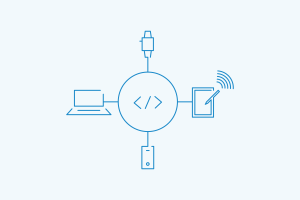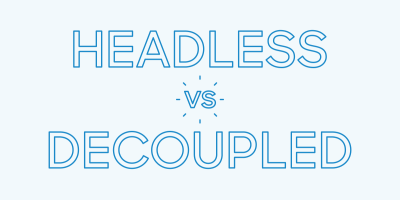Create Once, Publish Everywhere with Headless Drupal

Collection :
How customers interact with brands has changed. Users are no longer confined to the traditional digital experiences we’re most accustomed to — websites, mobile applications, and the like.
Customers instead engage with content and data across many touchpoints, each with its own unique requirements. Accommodating this explosion of channels means marketing teams need to treat content management differently.
Take the Amazon Echo, for instance. The smart speaker is a household staple, allowing users to play music, order an Uber, or pay a credit card bill through a conversational UI. Unlike a traditional web page, an Echo has no visual display or screen. In short, a web page and a voice assistant don’t understand content in the same way. To interact with customers at every touchpoint, organizations need to streamline how they deliver content to an increasing number of available devices.
Doing so calls for a content management system (CMS) decoupled from the front-end presentation layer. When content is separate from display constraints, it can be pushed to any content medium of the marketer’s choice — web, app, voice assistant, smart TV, VR, etc.
Let’s explore what that looks like with open source CMS Drupal. Other content management systems may facilitate the same end goal, but Drupal is what we know best. If you need guidance on choosing a CMS, though, we’ve got a handy guide that walks you through considerations to keep in mind during the selection process.
What is headless Drupal?
Headless or decoupled Drupal enables other applications’ front ends to consume content stored in your Drupal back end — going well beyond the presentation scope of traditional Drupal content. That content is no longer tied to a limited presentation medium and can be delivered to any channel.
Beyond publishing content to a website, you can use a headless approach for a central CMS to distribute content to a voice assistant, feature it on a digital display, include it in your mobile app, or whatever channel you want.
Headless Drupal is API-first
By adopting an API-first architecture, Drupal can power every instance of your digital system.
API-first refers to the interaction between your CMS and different applications, allowing the two systems to exchange data over a network. Using API-first Drupal allows organizations to decouple the front end and use another technology for the theming layer and presentation.
An API-first architecture can also mediate the challenges associated with governing an expanding number of touchpoints and channels.
Offering the best of all worlds, Drupal delivers universal content flexibility. This functionality gives front-end developers and content authors creative range to construct content-rich experiences for any channel, screen, device, or digital medium.
Let’s look at real-world examples of brands that use Drupal to power a variety of channels and platforms.
Headless Drupal in action
MTA: New York City’s Metropolitan Transit Authority (MTA) uses Drupal to make sure every commuter gets the right experience on the right device at the right time by extending the information from www.mta.info to digital displays at subway and train stations. MTA uses the same CMS for its website to push content and data to the 1,800 digital signs in more than 400 stations across its system. Data is pulled from external feeds, pushed to Amazon IoT Services, and displayed in real time on the countdown clocks. MTA relies on Drupal to ensure content updates are uniform across all platforms so that passengers are better informed during their travel.
LiveWire: Electric motorcycle manufacturer, LiveWire, was looking to change the way folks get around. Reaching that goal meant education and awareness, which requires a modern, capable, and attractive digital presence. Their current site wasn't cutting it, so they went headless, taking advantage of Drupal as a headless CMS. Now, they have media-rich content that puts you as close to riding a motorcycle as you can be without actually doing it IRL. It's made a difference, too. The preorder page for their new S2 Del Mar Launch Edition bike model helped preorders sell out in 20 minutes. Look, feel, and site performance have all converged to enhance customer experience and show the world that headless Drupal actually turns heads.
Pac-12: The Pacific 12 (Pac-12) Conference for collegiate sports is pretty common across the US. They've got their own media company — Pac-12 Networks — and, for the huge Pac-12 fan base, they wanted new websites for schedules, videos, mobile optimization, social media and engagement, and content creation. Pac-12 Networks built 3,000+ landing pages and migrated all of their video content — pre-game, live, and post-game — to the new website. A headless CMS paved the way for this transition and helped double the hours that people watched video across the platform.
What’s next?
As businesses continue to adapt to consumers’ needs and expectations, headless Drupal has become a natural fit. Indeed, it’s ideal for omnichannel content, bringing to mind Visa’s tagline: “It’s everywhere you want to be.”
Interested in seeing how it works? We’d love to show you.


